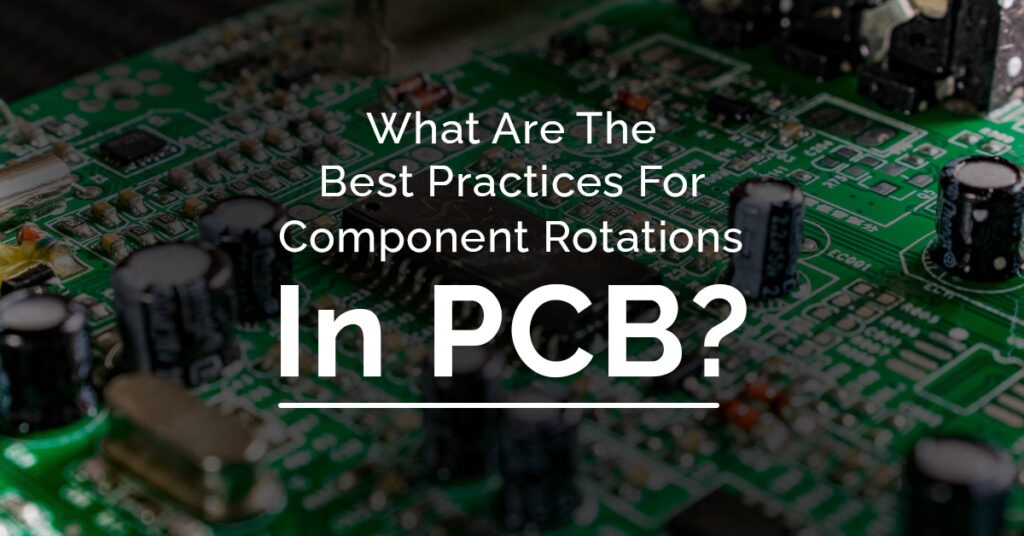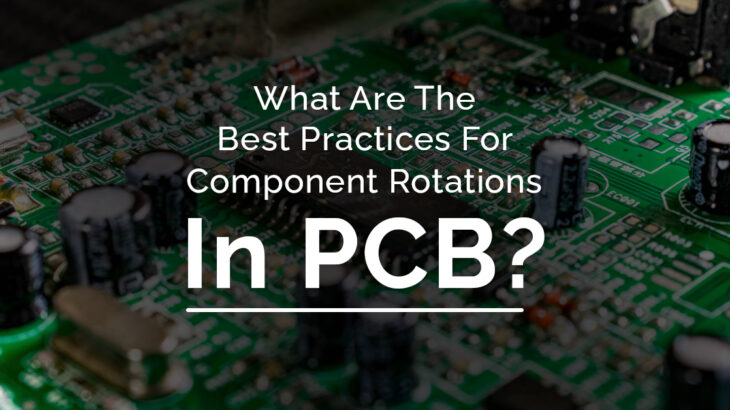
When observing a PCB layout, a common question arises: why is it common to observe components positioned at angles multiples of 90 degrees? Generally, one will notice components with orthogonal rotations in a PCB layout, with axes predominantly aligned parallel or perpendicular. These phenomena can be attributed to several intriguing factors, some of which remain significant, while others are linked to the functionality of placement tools within CAD software like OrCAD PCB designer.
Certain guidelines are outlined for component packaging, which must be applied when defining and crafting your footprints. These guidelines will assist in programming your SMT line and ensuring the quality control of your assembly orders. Additionally, it will prevent you from assembly defects by enforcing uniform rotation values without using excessive localized fiducials.
Rotations Used In The PCB Layout:
Generally, perpendicular alignments are commonly employed in most PCB design software. Several reasons support this approach:
PCB layout tools support rotations like 90-degree, flipping, and mirroring to streamline your workflow and expedite effective component placement.
By establishing rotations in precise 90-degree angles aligned with the board’s edge, the necessity for fixtures on the SMT line during the soldering of irregularly shaped boards is obviated.
Ensuring that rotations correspond consistently with the pin-1 orientation in packaging precludes programming errors on the SMT line, enhancing overall operational accuracy.
Rotations On Footprint:
Components provided on reels by manufacturers will adhere to an orientation outlined in IPC/JEDEC joint standards. When creating your footprints, aligning the 0-degree rotation with the component’s feeding direction within the reel is advisable. This practice accelerates the verification process of pick-and-place data against the footprint’s orientation on the PCB layout and reel. Furthermore, it prevents the requirement to manually adjust pick-and-place data to align with the part’s orientation in the reel.
Assembly Rotation:
In earlier days, positioning components at non-standard angles posed challenges due to the limitations of pick-and-place machinery. However, modern machines have significantly advanced and can now accurately place components virtually at any angle. The component can be successfully positioned on the PCB during assembly until the angular rotation is accurately defined within the pick-and-place position.
If your PCB possesses multiple curves or odd shapes, utilizing a fixture might become imperative to establish a distinct point of reference for the rotational alignment of components within the pick-and-place apparatus.
In this scenario, where the PCB has an irregular shape and orientation within the design software, the alignment of the pick-and-place machine will not match the designated reference edge used for board stabilization. Employing a fixture becomes paramount to ensure a seamless assembly process. However, it’s important to note that if the straight edge is employed, which does not align with the PCB layout data edge, then modifications will be necessary for all the pick-and-place information.
When dealing with sizable BGAs or QFNs, it’s advisable to incorporate localized fiducials along the diagonal axis of the components. This practice ensures precise alignment and rotation during placement. Diagonal local fiducials are sometimes strategically placed on larger chips to enable localized angular measurements during component placement.
Hence, these are the essential things or practices to be followed for an optimized PCB component rotation. Approach, Sunstream, the best outsourcer of PCB design services to create cutting-edge products with the complete design features in Allegro PCB designer.




 +1.585.935.7123
+1.585.935.7123 +91-804-148-6861
+91-804-148-6861